
I. Vlog Camera Selection Guide:
Before you decide to buy a Vlog camera, you need to consider the following:1. Camera Type
• Action Camera:
Advantages: anti-fall, waterproof, not easy to break, wearable, some models have good anti-shake.
Consider: the picture quality of the mobile phone is general and the viewing angle is single.
Subjects: all kinds of sports videos and videos that need to be free.
Action cameras are compact, portable and portable, and can often withstand some roughness and drop factors. They almost always have a fixed wide-angle field of view and can capture all the action you see in front of you. Motion cameras are best for video recorders that are on the move and don't want to carry too much equipment. The best known action cameras are GoPro and DJI.
• Digital Single Lens Reflex (DSLR):
Advantages: good picture quality, strong background blurring, and adaptability to various scenes.
Consider: the price is relatively high and the weight and volume are relatively large.
Subjects: high-quality short videos, Vlogs, micro variety shows, micro films, etc. that pursue a sense of film.
DSLR cameras are the big boys of cameras and offer the best versatility when capturing both photos and video at the highest quality. DSLR cameras achieve this quality with large sensors and large interchangeable lenses that can change the field of view. Note that digital DSLR cameras are bulky, so if you want to spot and shoot something right away, a DSLR may not be the best choice.
• Mirrorless Interchangeable Lens Camera (Mirrorless):
The advantages and suitable subjects are the same as those of SLR.
Similar to the DSLR, the Micro Single has a large sensor that can take high quality photos and videos. But differ in that they do not physically move the mirror. Micro single can not use the mirror, the image directly into the sensor. Easier to use than DSLR, Micro Single is a compact camera with equivalent image quality and excellent video quality.
• Micro Four Thirds:
Advantages: compact and portable, the picture quality is OK.
Consider: compared with the micro single at the same price, the cost performance is slightly lower, and the background blurring ability is general.
Subjects: Exquisite personal daily short video or Vlog.
Micro Four Thirds, it cancels the reflector, pentaprism and other structures of traditional SLR cameras, making the camera body more compact. But they have the same ability to change lenses. Its compact size and lens range make it the most popular type of video recording camera.
• Compact/Point and Shoot:
Advantages: very small, light and portable, with good anti-shake performance.
Consider: the effect of video shooting is not very different from that of mobile phones.
Subjects: easy and simple recording of daily life or travel.
Compact/Point and Shoot are a happy medium between tiny but limited action cameras and large but versatile digital SLRs. They can often offer all the features of an action camera and a DSLR at the same time, but aren't particularly great at either end. Pocket/point-and-shoot cameras are a good choice if you're not sure what kind of video recording to do, or if you need other kinds of footage without too much equipment.

2. Field of view
The field of view is the width "seen" by the video image. As a result, the narrow FOV is great for close-ups, while the wide FOV is for action scenes where you want to see as much as possible in the frame. Action cameras offer the widest field of view, but don't allow for very high quality close-ups.
3. Resolution/Megapixels
Generally, the higher the megapixel count, the better it sounds. Images are plentiful, and 1080p is great for video.
4. Sensor Size
The sensor is a panel on which pixels/points are placed to collect light. The larger the sensor, the larger the pixels/points can be, which means your picture has more light, data and clarity. Compact cameras like action cameras tend to have very small sensors, while larger cameras like DSLRs tend to have large or full-frame sensors. If you're just getting started (especially with video blogging), you don't necessarily need a big sensor. Video blogging is mostly about capturing the action in front of your eyes in a "live recording" way.
5. Monitor
The display is an electronic screen on the camera that lets you preview the footage you're shooting. Some are very big and some are very small, mainly depending on one's preference.
6. Microphone Input
For most video clips, you probably want to be able to record audio. Actually, most built-in microphones aren't particularly good at providing clear audio, especially when it comes to isolating sound from traffic and so on. For this reason, it's a good idea to make sure your video camera has a microphone input so that you can connect a better quality external microphone.
II. Vlog Camera Recommendation
1. Canon PowerShot G7 X Mark IIIIf you're looking for the absolute best video cam that can help your Youtube,TIKTOK or vlog for years to come, the Canon G7 X Mark III is the best video cam you can get right now. The Powershot G7 X-Series has long been a favorite of the world's best Vloggers and Youtubers (FunForLouis and Case Neistat, for example). The Mark III version of the Powershot G7X is the best in the line, with a 4K sensor and nearly unmatched image stability.
Features:
> Compact/point-and-shoot camera
> Field of view: 24-100mm
> Resolution: 20.1MP
> Sensor size: 1. 0” CMOS
> Maximum video resolution: 4K 30 FPS
> Monitor: 3-inch touchscreen LCD screen with 180 degree tilt for self-portraits
> Viewfinder: None
> Connectivity: SD, SDHC, SDXC, USB Type C, HDMI Micro (Type D), Wi-Fi, Bluetooth
> Dimensions/Weight: (105 X 61 X 41 mm), 304 G (including battery)
> Microphone input: 3.5mm microphone input

2. DJI Osmo Action Camera
The Osmo Action Camera is DJI's attempt at a direct attack on the GoPro Hero series, and we must say, they did a great job. Not only does it lower the price of its GoPro Hero 7 competitors, but it also trumps it on some features.
It matches the GoPro Hero 7 in most technical aspects, but it has a larger, longer-lasting battery and a very convenient front color screen. Compared to the GoPro Hero 7, it offers better features because you can see the video being recorded while you're shooting.
Most people think that DJI's electronic image stabilizer RockSteady is arguably as good as a physical gimbal, which is really incredible. It should be noted, however, that when RockSteady is enabled, there is a slight delay in the content of the Osmo action film and what is seen in the viewfinder.
DJI's Osmo action is waterproof and comes with a shell and adhesive mount, so you can stick it on a car or helmet to capture the perfect action.
All in all, the DJI Osmo operation offers exceptional value, comparable to GoPro.
Features:
> Type: Action
> Field of view: Wide
> Resolution: 12MP
> Sensor size: 1/2.3 inch (6.17 X 4.55mm) CMOS
> Maximum video resolution: 4K 60fps
> Display: Front LCD 1.4 ", Back LCD 2.25"
> Viewfinder: None
> Connectivity: MicroSD, USB-C, Wi-Fi, Bluetooth
> Dimensions/Weight: 64 X 69 X 25mm, 154 G
> Microphone input: 3.5mm microphone input with adapter
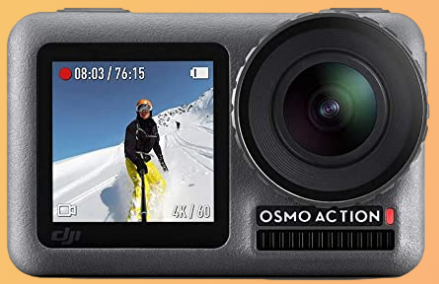
3. DJI Osmo Pocket Action Camera
For under $300, the price/performance ratio is extremely high for DJI Osmo Pocket beginner webcam cameras. It's super portable, weatherproof, and still packaged with 4K video. Actually, you might think it's a GoPro, pocket-sized.
DJI's world-famous gimbal stabilizer is the biggest trick of all. All other video recording cameras in this list will use digital stabilization, that is, the software will do its best to make the video look more stable.
But the DJI Osmo Pocket has a physical gimbal mount (like the ones you see on DJI's very expensive drones) that holds the actual camera steady, creating a silky smooth video recording that looks so professional. Not bad for something that fits in the smallest pocket.
The only downside is that the DJI Osmo Pocket is best for video, not photography. But, considering that the "V" in "vlog" stands for "video," if you're just starting out, you don't have to worry too much about it.
If your budget is fairly low and you want a webcam that you can carry around without a backpack, a DJI Osmo Pocket is really a good choice.
Features:
> Type: Action Camera
> Field of view: Wide
> Resolution: 12MP
> Sensor Size: 1/2.3 "CMOS
> Maximum video resolution: 4K 60fps
> Display: Front LCD: 1.4 ", 330ppi, Rear LCD: 2.2" touchscreen
> Viewfinder: None
Connectivity: MicroSDMax, Lightning, USB-C. Wi-Fi and Bluetooth with wireless module
> Dimensions/Weight: 121.9 × 36.9 × 28.6 mm, 116 G
> Microphone input: 3.5mm microphone input with adapter

4.Canon EOS M50
Canon fans were delighted to see the EOS M50, their first foray into the 4K mirrorless market. The EOS M50 is part of Canon's high-end range in the MD market, offering features not found in cheaper models.
In other words, the EOS M50 is an enthusiast's camera because it has a lot of features without overwhelming you.
Although the video image is very good, it should be noted that when shooting at 4K, there will be 1.6 times cropping. This means that the sensor can be magnified by 1.6 times to accommodate 4K stabilized lenses. Close shots are fine if you want, but if you want a very wide angle on a 15-45mm lens, it can be difficult to capture everything.
Overall, the EOS M50 has a wide range of features, but is somewhat compromised in reaching its mid-range price. However, if you are a fan of the Canon ecosystem, the EOS M50 may be a great fit for your needs.
Features:
> Type: Micro Single
> Field of view: interchangeable lenses
> Resolution: 24.1MP
> Sensor size: 1/2.3 inch (6.17 X 4.55mm) CMOS
> Maximum video resolution: 4K 23.98 FPS
> Display: 3.0 inch touch screen LCD
> Viewfinder: OLED electronic viewfinder
> Connectivity: SD, SDHC, SDXC, Wi-Fi, Bluetooth, NFC
> Dimensions/Weight: 116.3 X 88.1 X 58.7 mm, 387 G (including battery and lens kit)
> Microphone input: 3.5mm stereo microphone Jack
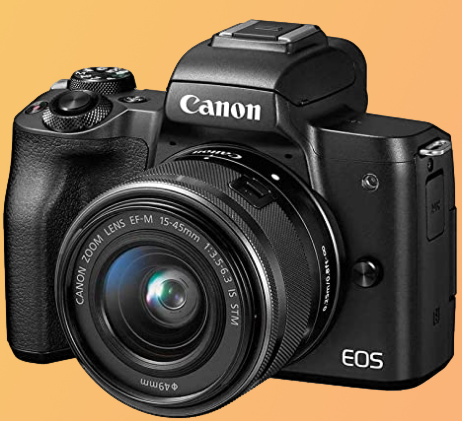
5. Panasonic LUMIX G85 4K Digital Camera
The DMC-G85MK is a mid-range video contender with features that strike the sweet spot between ease of use and technical capability. At the helm is a 16-megapixel Micro Four Thirds lens with 4K 30 FPS video support. However, if you're looking for 60fps super-smoothing, you'll need to shoot at 1080p. Either way, you can use MFT lenses to capture details and, therefore, capture high-quality video.
Another eye-catching feature is the 5-axis dual image stabilization, which is done through the sensor, as well as the dual-axis stabilization of the lens. This reduces motion blur and makes photos and videos crisper and sharper, a key factor in vlogging while walking and recording yourself.
The Lumix DMC-G85MK has a fast 49-point autofocus system and is a beast that becomes clear on the focused picture. The camera is also weatherproof and dustproof (but do not use it while swimming), making it easier to see and shoot, even in inclement weather.
The feature we really like is the post-focus mode. Let's say you take a quick photo, but the autofocus is not completely focused on the right side of the image, or you may notice that you don't find anything when you take the photo later. After taking a picture, the Lumix DMC-G85MK can actually help you choose a new focus.
Overall, this is an excellent camera for the budget. If you're looking for a mid-range camera with all the bells and whistles, try the LUMIX DMC-G85MK.
Features:
> Type: Micro Four Thirds
> Field of view: interchangeable lenses
> Resolution: 16MP
> Sensor Size: Micro Four Quarter CMOS (17.3 X 13 mm)
> Maximum video resolution: 4K 30 FPS
> Display: 3.0 inch touch screen LCD
> Viewfinder: OLED electronic viewfinder
> Connectivity: SD, SDHC, SDXC, Wi-Fi, microHDMI (D-type), NFC, Micro-B USB 2.0
> Dimensions/Weight: 116.3 X 88.1 X 58.7 mm, 615 G (including battery and lens kit)
> Microphone input: 3.5mm microphone input with a hot shoe (interface slot) on the top for connecting a microphone
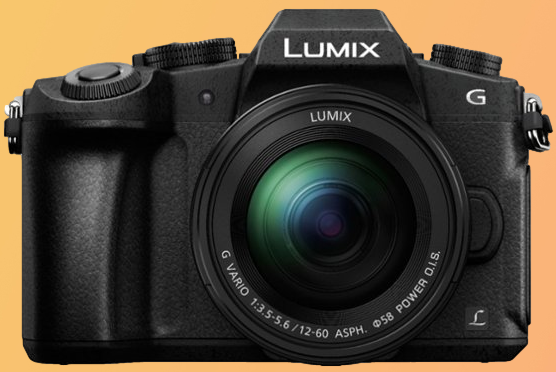
6. Sony ZV-1 Camera
The Sony ZV-1 camera offers a range of options within a very small body. Even though it fits in your pocket, it's especially good for vlogger use because it has some great video features.
The flip screen and impressive built-in microphone make you stand out from the crowd. This model has a 1-inch 20.1-megapixel sensor and fast hybrid autofocus. The camera doesn't have an electronic viewfinder, though, so it's best to use it for video because it has background defocus, a built-in neutral density filter for outdoor use, a face priority exposure setting, and an effect that softens the skin spots on the skin.
The built-in lens gives you up to 4K video resolution and full HD at 120 FPS. It records super slow motion video at 1080p and 120 and 240 FPS. You can control everything from the flip-out touch screen display. The built-in forward-facing microphone and MI mount enable you to capture excellent sound. However, since there is no headphone Jack, you will not be able to check the sound of the video.
Still, it's the perfect camera if you're going to show off products or show them in a video blog, because you can quickly "switch focus modes to look for products.". If we compare it to Canon's M50, its low-light performance will be even better.
The model also features an impressive array of serious photography controls for such compact cameras, as well as an intuitive menu system for navigating these functions. Connectivity is also nice as it has Wi-Fi, Bluetooth, NFC and USB 2.0 as well as the usual physical storage. It only has one SD card.
Features:
> Type: Compact
> Field of view: 24-70 – (2.7x optical zoom)
> Resolution: 20.1MP
> Sensor Size: 1 (13.2 X 8.8 mm) BSI-CMOS
> Maximum video resolution: 1080p 60fps
> Display: 3-inch touch screen
> Viewfinder: None
> Connectivity: SD, SDHC, SDXC, Multi/Micro USB Terminal * 15, Hi-Speed USB (USB2.0), Micro HDMI
> Dimensions/Weight: 105.5mm X 60mm X 43.5mm, 294 G
> Microphone input: Built-in microphone only

7. Canon DSLR Camera
The Canon 90D camera is a hot commodity for Canon, and it still enables those who are not yet willing to jump on the train of the Micro Four Thirds and want a solid DSLR that can still be used for video recording.
The Canon 90D has a larger megapixel count at 32.5 MP than most of its APS-C sensor competitors, which provides more flexibility when cropping images and video while editing.
It also means glorious, uncropped 4K video! This means that even with a basic Canon lens, you should get a wide enough field of view to get a decent video recording lens at handheld distance.
The only real downside to the Canon 90D is that it has only one SD card slot and no in vivo stability.
That being said, if you're already in the Canon ecosystem, we definitely recommend the Canon 90D as a great DSLR.
Features:
> Type: Digital SLR
> Field of view: interchangeable lenses
> Resolution: 32.5MP
> Sensor size: APS-C sensor (22.3 X 14.9 mm)
> Maximum video resolution: 4K 30 FPS
> Display: 3.0 inch hinged touch screen LCD
> Viewfinder: optical viewfinder
> Connectivity: SD, SDHC, SDXC, Wi-Fi, Bluetooth, NFC, Mini (Type-C) HDMI, Micro-B USB 2.0
> Dimensions/Weight: 141 X 105 X 77mm, 1,216g (including battery and lens kit)
> Microphone input: 3.5mm microphone input

8. Sony Alpha A6600 Mirrorless Camera
Like anything Sony makes, the Alpha A6600 is built with great craftsmanship, and the Alpha A6600 features built-in stabilization, HDR video, and real-time eye autofocus for video-often all the top specs for a camera, let alone a video camera. It also has a variety of compatible lenses, depending on your specific needs.
But there are some drawbacks that you might not expect to use a camera within this budget. Some people find the controls awkward and the menu system unnecessarily complicated. The image preview area on the screen is also very small for a camera of this price.
Overall, the Sony Alpha A6600 should be at the top of your blog shopping list if you're looking to get as much top spec as possible without having to climb all the way up to a full-frame sensor budget.
Features:
> Type: Micro Single
> Field of view: interchangeable lenses
> Resolution: 24.2MP
> Sensor Size: APS-C (23.5 X 15.6 mm)
> Maximum video resolution: 4K 30 FPS
> Display: 3.0 inch hinged touch screen LCD
> Viewfinder: electronic viewfinder
> Connectivity: SD/MSDuo, Wi-Fi, Bluetooth, NFC, Mini (D-type) HDMI, Micro-B USB 2.0
> Dimensions/Weight: 120 X 67 X 69mm, 828g (including battery and kit lens)
> Microphone input: 3.5mm microphone input

9. Canon Full Frame Mirrorless Camera [EOS R] |
The EOS R is Canon's first full-frame mirrorless camera, which is a big leap forward for Canon and therefore a big step forward for Canon enthusiasts.
Full-frame mirrorless Canon creates powerful cameras-Canon goes to great lengths to mark its own areas in the full-frame mirrorless space, while allowing great room for customization and quality.
The EOS R comes with a new RF lens mounting system, but you can still use all other Canon lenses with adapters if you need to. It also features the crazy 5655 dual-pixel autofocus system that features a crisp, clear color screen, so you can definitely be sure to get ultra-clear video recordings. The downside, though, is that EOS strangely ignores in-vivo stabilization, and its 4K video is slightly cropped.
If you're rooted in the Canon family and want to use a full-frame mirrorless camera, go with EOSR. However, if you're not a Canon fan, we might recommend using the Alpha A7 III.
Features:
> Type: Micro Single
> Field of view: interchangeable lenses
> Resolution: 30.3MP
> Sensor size: Full frame CMOS sensor (36 X 24mm)
> Maximum video resolution: 4K 30 FPS
> Display: 3.2 hinged touch screen OLED
> Viewfinder: electronic viewfinder
> Connectivity: SD, SDHC, SDXC, Wi-Fi, Bluetooth, NFC, Mini (Type-C) HDMI, USB Type C
> Dimensions/weight: 136 X 98 X 84 mm, 1,360 G (including battery, with accessory lens)
> Microphone input: 3.5mm microphone input

10.Sony Alpha 7C Full-Frame Compact Mirrorless Camera
Although many people think that the A7 III and the Alpha 7C full-frame compact mirrorless camera are actually the same camera. Yes, they are similar in many ways. Still, price and other key features set the two models apart.
The Alpha 7C's battery life, autofocus performance, and kit lens are among the biggest improvements. Because of its large "Z-shaped" battery, it can take 740 pictures using the LCD screen and 680 pictures using the viewfinder. It can be charged via a USB-C connection. You can record in 1080p slow motion at 120 FPS.
The A7C uses an improved focus algorithm that makes autofocus more reliable than the one on the A7 III. Like previous models, the camera has eye and animal detection, but is much better at auto-focusing with animals as subjects.
The camera provides 4K UHD video recording in XAVC-S format. Up to 30 FPS. A 2.36 megapixel X GA OLED electronic viewfinder and a 3-inch, 3:2 OLED screen are not new features. Still, given that the Alpha 7C comes with a brand new FE 28-60mm F4-5.6 retractable kit lens, it's worth checking out.
Features:
> Type: No Mirror
> Field of view: interchangeable lenses
> Resolution: 24.2MP
> Sensor size: Full frame CMOS sensor (36 X 24mm)
> Maximum video resolution: 4K 24 FPS
> Display: 3-inch tilting OLED touch screen
> Viewfinder: electronic viewfinder
> Connectivity:
Slot 1: Wi-Fi (2.4GHz), USB-C (USB 3.2), SD/SDHC/SDXC (UHS-II),
Slot 2: SD/SDHC/SDXC/Memory Stick Duo Hybrid (UHS-I), HDMI D
> Dimensions/Weight: 124 X 71 X 60 mm, 509 G (body only)
> Microphone input: 3.5mm microphone input
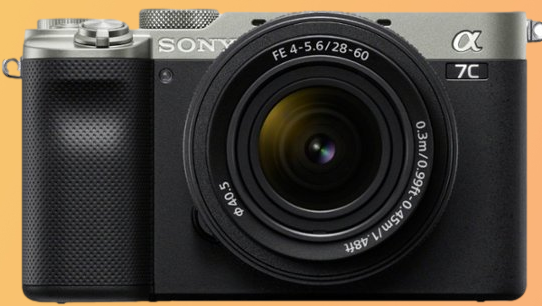
11. Sony NEW Alpha 7s III Full-frame Interchangeable Lens Mirrorless Camera Micro Single
The Alpha A7S III features a 759-point autofocus system, 4K UHD 2160p video, 5-axis in-body anti-shake, and a 12.1MP Exmor R sensor, all wrapped in a typically rugged Sony body. The Alpha A7 III and the new Alpha 7s III are similar in design, size and weight. The A7S is slightly lighter at 699 grams (1.54 pounds) including the battery.
The new model can shoot 4K at up to 120 FPS. Compared to other mirrorless Sony models, the A7S supersamples the entire sensor at 1080p resolution and delivers superior HD quality. Improved BIONZ XR image algorithms and processing functions, as well as real-time human and animal fast mixing autofocus, make it easy to track subjects. It can record up to 120p in 4K in Super Slow Motion and up to 240 FPS in Full HD (S & Q mode). Up to 3 hours on a single charge.
Regarding photos, there are two file options: HEIF, which has better quality and compression ratio than JPEG (4:2:0 or 4:2:2). The impressive 4240 X 2832 resolution (12.1 MP) enables you to capture the smallest details with great precision. Capable of taking up to 600 pictures on a single charge, about 10 fewer than its predecessor, the A7 III. However, most people buy it because of its excellent video capabilities.
The same 3-inch screen is an improved version of the previous one, as it has 1440 K dots compared to the 922k dots on the A7 III. Some would argue that it's only 12.1 megapixels, but as YouTuber Matti Haapoja said, Sony did it to "maximize video capabilities" and "make the pixels bigger and better.". That's why this is the perfect vlog camera, especially if you want to show off your surroundings.
In addition, the new model has dual card slots containing two UHS II SD cards and the CF express A-card, Sony's latest small fast card.
Features:
> Type: No Mirror
> Field of view: interchangeable lenses
> Resolution: 12.1MP
> Sensor Size: 12.1MP Exmor R CMOS Sensor
> Maximum video resolution: 4K UHD 2160p
> Display: 3 inch reversible variable angle touch screen LCD
> Viewfinder: electronic viewfinder
> Connectivity:
Slot 1: Multiple slots for SD (UHS-I/II compatible) memory cards/CF express Type A cards,
Slot 2: Multiple slots for SD (UHS-I/II compatible) memory cards/CF express Type A.
> Dimensions/weight: 129 X 97 X 81 mm, 699 G (including battery)
> Microphone input: 3.5 mm stereo mini-jack
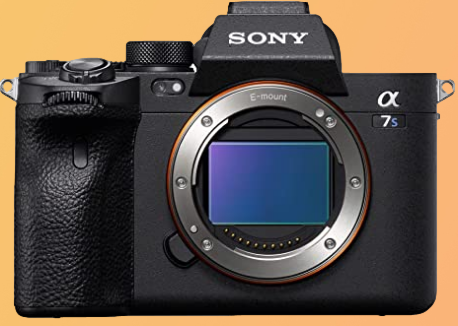
12. Canon EOS-1D X Mark III DSLR Camera
Canon EOS-1D X Mark III DSLR camera has a full-frame CMOS sensor inside the body. Although the model looks a bit bulky, it provides a lot of gorgeous light and detail in your photos and vlog footage. The 20.1 megapixel camera is Canon's latest digital SLR. The DIGIC X processor, combined with a powerful sensor, gives you 16 to 20 FPS in live display mode with shutter, where it can be used as a mirrorless camera.
You can also capture 1080p at 120 FPS in slow mode. That's why this is a great movie camera.
The 1D X Mark III features an impressive array of serious photographic controls, as well as an intuitive menu system to navigate through these features. For example, the viewfinder uses deep learning to recognize heads and faces, while the AF Smart Controller makes it a breeze to control the AF point because it looks like a computer mouse instead of a joystick. The sensor "flies" through the screen, making the AF very easy to operate.
Despite the lack of a pop-up flash ( "a miss," as Peter MacKinnon put it), the 1D X Mark is perfect for any photographic and video recording task. It features a "focus peak" with a red outline as well as a "focus assist" so you can stay tuned at all times.
The camera's video capture capability is a big plus, and it can use 5.5K/60p 12-bit RAW (AF Lock) whenever you need to convert from a still image to a video image. It also offers full-screen Full HD at up to 120fps and a cropped 4K/60p (UHD and DCI) option with AF. The lack of image stabilization may disappoint some people. The 3.2-inch screen doesn't tilt, which is also a good deal for some people.
With all that in mind, if you want to further your vlogging career, the Canon EOS-1D X Mark III DSLR camera is definitely the best DSLR camera for you.
Features:
> Type: Digital SLR
> Field of view: interchangeable lenses
> Resolution: 20.1MP
> Sensor size: 1 inch (13.2 X 8.8 mm) newer CMOS
> Maximum video resolution: 5.5K/60p
> Display: 3.2 inch fixed touch screen
> Viewfinder: pentaprism
> Connectivity: Wi-Fi (2.4GHz), USB-C (USB 3.1 Gen 2), Bluetooth, Headphone Jack, N3 Remote Release Terminal, HDMI mini, External Microphone, Flash PC, Gigabit Ethernet (10BASE-T, 100BASE-TX, 1000BASE-T)
> Dimensions/Weight: 158 X 167.6 X 82.6 mm, 1,250 G (body only)
> Microphone input: Built-in mono microphone, external stereo microphone
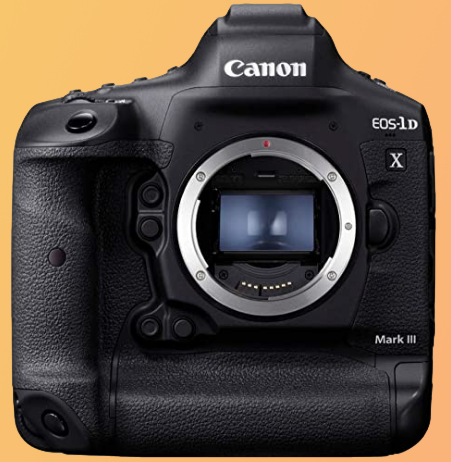
* If there is infringement, please contact us in time, this site will be deleted.

![2022 [DSLR,Mirrorless,card camera,action camera] vlog camera recommendation](http://vlogsfan.com/cdn/shop/articles/vlog_camera.jpg?v=1661434240&width=1100)